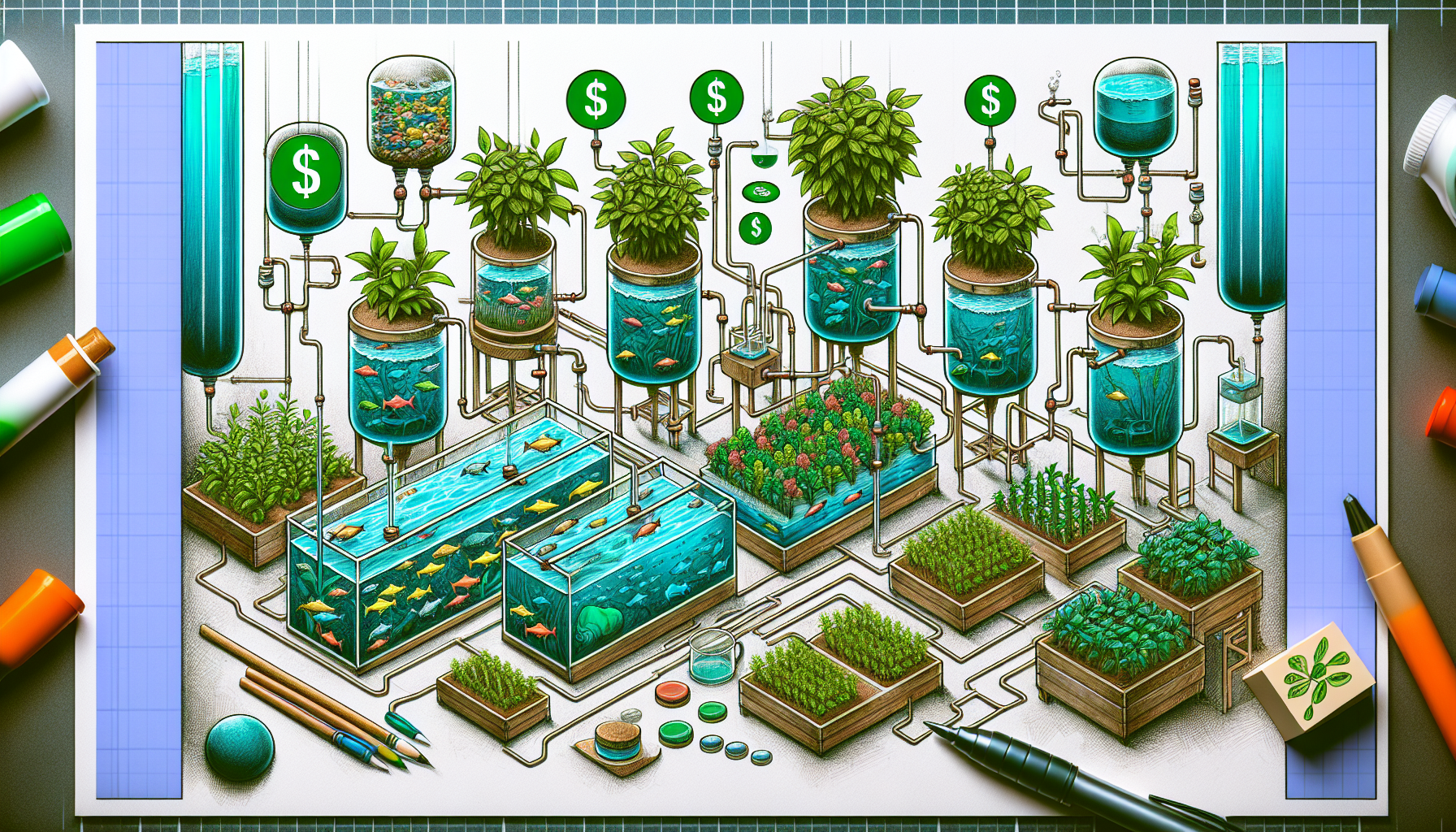Aquaponics, the innovative farming method that combines aquaculture and hydroponics, presents numerous advantages that have garnered widespread attention. However, it’s important to acknowledge the potential drawbacks of this sustainable practice. In this article, we’ll explore five disadvantages of aquaponics. By examining these limitations, you can gain a comprehensive understanding of aquaponics and make informed decisions about its implementation in your own farming endeavors.

High Initial Setup Cost
Setting up an aquaponics system can involve significant upfront expenses. One major cost factor is equipment, such as fish tanks, grow beds, filters, and pumps. These items can add up, especially if you opt for high-quality and durable materials. Additionally, you need to consider the infrastructure costs involved in constructing a suitable space for your aquaponics setup. This can include building or modifying a greenhouse, setting up plumbing and electrical connections, and installing lighting systems. Lastly, professional installation costs may come into play if you choose to have experts help assemble and optimize your system for maximum efficiency.
Technical Complexity
Operating an aquaponics system requires a certain level of technical know-how. Monitoring and maintaining the system can be challenging, as you need to ensure that all components are functioning properly. This involves regularly checking various parameters such as water temperature, pH levels, and dissolved oxygen levels. Balancing nutrient levels is also crucial to ensure healthy plant growth, as too much or too little of certain nutrients can impact the overall system performance. Additionally, water quality management is essential to prevent the accumulation of harmful substances that can affect your fish and plants.
Susceptibility to System Failures
Aquaponics systems are not immune to equipment failures, and when these occur, they can disrupt the entire system. Pump failures can cause inadequate water circulation, which can lead to oxygen deprivation for the fish and nutrient deficiencies for the plants. Power outages are another concern, as they can halt the operation of crucial components like pumps and aerators. Furthermore, fish disease outbreaks can occur, and if not addressed promptly, they can result in fish mortality and affect the overall balance of the system.

Limited Crop Selection
While aquaponics can be an excellent method for growing leafy greens such as lettuce, spinach, and herbs, it may not be as suitable for growing certain types of crops. Many fruit-bearing plants, such as tomatoes or peppers, have specific nutrient requirements that might not align perfectly with the nutrient ratios present in aquaponic systems. Additionally, root vegetables, like carrots or potatoes, require a soil medium for growth, which is incompatible with the soilless nature of aquaponics.
Dependence on Electricity
Aquaponics systems heavily rely on a constant and reliable power supply. The pumps that circulate water, aerate the fish tanks, and maintain proper water flow all require electricity to function effectively. This dependence on electricity makes aquaponics systems more vulnerable during power outages, as extended periods without power can disrupt the system’s balance and potentially harm the fish and plants. Furthermore, if you live in a remote area with limited access to electricity, establishing and maintaining an aquaponics system may prove to be challenging.
Potential Water Contamination
maintaining water quality in an aquaponics system is crucial for the health of both the fish and the plants. However, there is a risk of water contamination from various sources. Chemical inputs, such as pesticides or fertilizers, if not used responsibly, can enter the system and harm the aquatic life. Fish waste buildup can lead to ammonia accumulation, which can be toxic to the fish if not adequately processed. Additionally, disease transfer between fish or from plants to fish can occur if proper hygiene practices are not followed.
Limited Fish Varieties
When it comes to choosing fish species for your aquaponics system, you may be limited in your options. Certain fish species are better suited for aquaponics due to their ability to tolerate the water conditions and provide adequate waste for nutrient production. Therefore, your choices may be restricted to these optimal fish species. Furthermore, if you have specific culinary preferences and would like to incorporate a wider variety of fish in your diet, aquaponics might not offer the diversity you seek. Lastly, different fish species have specific temperature requirements, which may limit your options based on the environmental conditions in your area.
Time-Consuming Monitoring
Keeping an eye on the various aspects of your aquaponics system can be time-consuming. Regular water testing is necessary to ensure the system’s balance and detect any fluctuations in key parameters. This testing involves measuring pH levels, ammonia, nitrite, nitrate, and dissolved oxygen levels. Additionally, fish feeding and health observation require consistent attention to ensure they are receiving adequate nutrition and are not showing signs of disease or stress. Monitoring plant growth is also essential to assess their overall health and productivity.
Climate Dependency
Aquaponics systems can be affected by temperature and seasonal changes. Temperature fluctuations can impact the growth and health of both fish and plants. Extreme weather conditions, such as heatwaves or cold spells, can be challenging to manage in an aquaponics system and may require additional resources to maintain optimal growing conditions. Additionally, inadequate sunlight in urban areas or areas with limited exposure to direct sunlight can hamper the growth of plants, affecting their productivity and the overall system performance.
Limited Scalability
The scalability of aquaponics systems can be limited by various factors. In indoor systems, size restrictions may prevent significant expansion due to space limitations. As the system grows, more fish tanks, grow beds, and equipment are needed, which may not be feasible in small indoor spaces. Outdoor systems also require adequate space to accommodate the larger footprint of the system as it expands. Additionally, the resources necessary for scaling up, such as water supply and nutrient availability, can become challenging to manage as the system grows in size and complexity.
